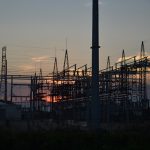How Slow-Moving Landslides are Being Impacted by Climate Extremes

Image courtesy of caleb_liaw under Attribution-NonCommercial 2.0 Generic License, resized to 700 x 391 pixels.
A new study from NASA concludes that climate change can affect slow-moving landslides in surprising ways. At first blush, this seems quite strange. I mean, it’s obvious that warming temperatures would impact droughts, rainfall, and hurricane activity, but landslides? Not exactly intuitive. Let’s take a look at what’s really going on here.
How Climate Change Impacts Slow-Moving Landslides
First off, “slow-moving landslides” are those where piles of Earth slowly creep downhill, usually just a few inches a year, but they can sometimes travel up to a foot in a given year. In California alone, there are over 650 slow-moving landslides. The nature of the impact lies in how the speed of this slow movement is affected.
Obviously, wet conditions trigger landslides, but the surprising element of NASA’s study is that landslides located in wet areas and dry areas behaved similarly during rain events – both types sped up and moved farther distances when exposed to rainy conditions. Essentially, both types of landslides reacted similarly to precipitation extremes.
You may be asking, why is this important? Well, the answer is that these insights can help predict landslide behavior in the future, which is helpful from an emergency preparedness perspective. These insights can also save lives, as evidenced by the sudden collapse of the slow-moving Mud Creek landslide in California in 2017. Simply put, landslides can easily take out infrastructure, cause outages, and cause fatalities, so the more predictive capabilities utilities can have around these events, the better prepared they will be when they occur.
Ultimately, researchers want to create a “landslide inventory” which would serve as an input into the emergency preparedness process for susceptible utilities. It could also enable a monitoring network that provides alerts to local officials which, for example, could be used to trigger the evacuation of a community in the path of an accelerating landslide.
There’s little doubt that slow-moving landslides represent yet another risk that utilities need to account for in emergency plans and procedures, and insights such as those from the NASA report can only help in this regard.



